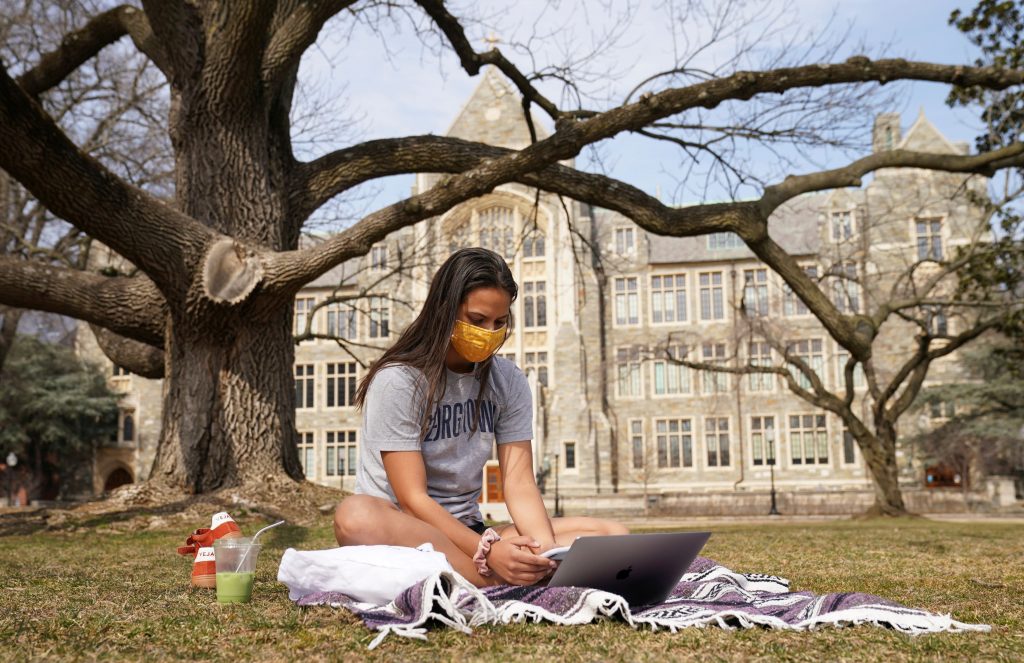
College dreams are not what they used to be.
Up until this year, high school senior Jason Neuharth, 18, was set on attending a technical school in his home state of Minnesota.
“I was adamant on going to college — this was going to be my future,” he said.
But the last 12 months of largely staying home and attending school in person only a few days a week left Neuharth with lots of time to reconsider, he said.
“I grew up with not a lot of money and that was a fear of mine — the money,” he said. “I would not be able to feasibly pay for college.”
Instead, Neuharth enlisted in the National Guard with an eight-year commitment. “This second option, this get-out-of-jail-free card, which was the military, seemed like a no-brainer.”
A year into the coronavirus crisis, many high school seniors have dramatically changed their expectations about the future.
A recent survey of high school students found that the likelihood of attending a four-year school sank nearly 20% in the last eight months — down to 53%, from 71%, according to ECMC Group, a nonprofit aimed at helping student borrowers.
High schoolers are putting more emphasis on career training and post-college employment, the report found.
More than half said they can achieve professional success with three years or less of college, and just one-fourth believe a four-year degree is the only route to a good job. ECMC Group polled more than 1,000 high school students three times over the last year.
Even before the pandemic, families were starting to question the return on investment, said Jeremy Wheaton, ECMC Group’s president and CEO.
″There is going to be a reckoning here.″
The price tag increasingly is a problem.
Tuition and fees plus room and board for a four-year private college averaged $50,770 in the 2020-21 school year; at four-year, in-state public colleges, it was $22,180, according to the College Board, which tracks trends in college pricing and student aid.
The significant increase in the cost of college has outpaced both inflation and — even more starkly — family income over recent decades.
After experiencing the sharp economic slowdown brought on by Covid, a majority of students and parents now say affordability and dealing with the debt burden that often goes hand-in-hand with a degree is their top concern, according to The Princeton Review’s 2021 College Hopes & Worries survey.
For college-bound students and their parents, a whopping 98% of families said financial aid would be necessary to pay for college and 82% said it was “extremely” or “very” necessary, The Princeton Review found.
A majority of high school students also said they are now applying to colleges with lower sticker prices. Another third said they were applying to colleges closer to home. The Princeton Review polled more than 14,093 people: Roughly 80% were college applicants, and 20% were parents of applicants.
Students dream of going off to college, said Robert Franek, The Princeton Review’s editor-in-chief and author of “The Best 385 Colleges.” “But, in fact, so many will stay within a three-hour drive.”
Remote school made it nearly impossible for many students to justify the expense. From the start, undergraduates voiced extreme dissatisfaction with virtual learning, particularly at the same high cost they were previously paying for an in-person education.
At George Washington University, roughly 10% of the freshman class decided not to enroll when the school announced that its campus would remain closed for the fall semester. (George Washington was one of the few schools that offered a tuition reduction for students studying remotely.)
″Like most universities, the pandemic was a very significant hit on our student body and our finances,” said Jay Goff, vice provost for enrollment at George Washington.
In 2020, institutions of higher education announced revenue losses in the hundreds of millions as roughly 500,000 would-be college students opted out entirely. (The government will send another $40 billion in aid to the nation’s colleges and universities after President Joe Biden signed the $1.9 trillion coronavirus relief bill Friday.)
“We understand that schools are in a difficult situation, but so are students and parents,” The Princeton Review’s Franek said.
Overall, undergraduate enrollment fell more than 4% this year, according to data from National Student Clearinghouse Research Center, with the fall’s incoming freshmen accounting for the biggest drop, sinking 13% from a year earlier.
“There’s no quick turnaround in sight for undergraduate enrollment declines driven by the pandemic,” said Doug Shapiro, executive director of the National Student Clearinghouse Research Center.
Shapiro said he expects continued declines in the fall of 2021, “but hopefully less steep.”
“There is still a lot more work to do to help bring learners back into higher education, particularly among disadvantaged groups who are struggling the most,” he said.